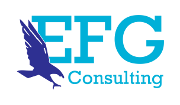Renewable energy plays a crucial role in the UAE’s economic growth & diversification plans. The UAE aims to bolster its regional position as a role model for sustainable development.
UAE’s renewable energy landscape:
1. The UAE has consistently demonstrated its willingness to be a world-leading advocate of clean energy technology. The country is looking to increase its target for power generation from clean energy to 30% by 2030.

2. The UAE leadership aims to enhance the country’s leadership in renewable energy in order to create an innovation-drive environment that generates job opportunities. The UAE will create more than 90,00 jobs in the renewable energy sector by 2030.

3. In terms of investment, the UAE is becoming a role model in renewable energy. The Abu-Dhabi based company Masdar has invested $2.7 billion into clean-energy projects over the past decade.

4. Gulf countries will save around $87 billion, which is equal to 2.5 billion barrels of oil equivalent, from lower oil and natural gas consumption if they achieve goals for renewables use by 2030 according to the Abu Dhabi-based International Renewable Energy Agency. The UAE’s savings from the renewable energy sources were between $1 billion and $3.7 billion in 2015.

5. The UAE government has committed over $340 million for sustainable efforts in developing countries. Abu Dhabi Fund for Development has announced $46 million in loans for 4 renewable energy projects in Africa and the Caribbean.

6. Abu Dhabi’s renewable energy company Masdar was official host partner to the Solar Impulse 2 that became the first aircraft to travel the globe without using a drop of fuel. The aircraft has flown day and night using only solar power in order to create more awareness on clean technologies.

7. Abu Dhabi’s Masdar City is one of the best examples of the UAE’s innovative and forward-looking strategies to boost its renewable energy sector. The world’s most sustainable eco-project is set to be completed by 2030. It is expected that 40,000 residents and 50,000 people working at the Masdar City by 2030.

8. Dubai aims to become the city with the lowest carbon footprint in the world. Dubai aims to generate 7 percent of its power from clean energy sources by 2020, 25 percent by 2030, and a whopping 75 percent by 2050.

9. Abu Dhabi’s Shams-1 is the largest renewable energy project in operation in the Middle East. Shams-1 is a 100 MW development that is one of the world’s largest concentrated solar power (CSP) projects.

10. Mohammed Bin Rashid Al Maktoum Solar Park, the world’s biggest solar park, is being built in Dubai. $14 billion solar park will eventually produce 5,000 megawatts, which is enough to power 800,000 homes, by 2030. Mohammed Bin Rashid Al Maktoum Solar Park will produce power for as little as $2.99 US cents per kilowatt-hour.
FONT: investingroup.org

